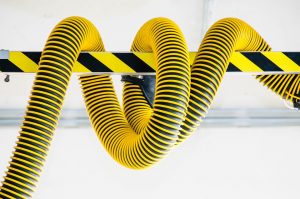Appropriate Cleaning Methods
The concept of air duct cleaning is actually kind of misleading.
In truth, your entire HVAC system needs cleaning. Failing to clean out all the system components can eventually result in the whole thing getting recontaminated, minimizing the benefits of doing a cleaning.

Just like you’d never clean just half of your kitchen floor, you also wouldn’t want to only clean parts of the HVAC system you rely on for heating and cooling.
NADCA suggests cleaning HVAC systems in their entirety, and that includes many of the following components.
Air Cleaner
Registers
Air Ducts
Heat Exchanger
Air Filter
Grills
Air Plenum
Blower Motor And Assembly
Drain Pan
Coils
HVAC cleaning has two central components.
The first is breaking contaminants loose, and the other is the collection of contaminants.
Breaking Contaminants Loose
The appropriate cleaning of an HVAC system will require contamination sources being removed. Source removal starts with using one or multiple agitation devices that are designed to get contaminants loose from any and all surfaces inside an HVAC system. Examples of various agitation devices include compressed air nozzles, skipper balls, air whips, and brushes. Agitation can happen through both contact vacuuming and hand-brushing.
Collection of Contaminants
During the cleaning process, an entire HVAC system is going to get put under continuous negative pressure, or a vacuum, in order to prevent contaminants from getting spread. Continuous negative pressure lets very fine particles get moved out of the system as they get airborne, which ensures that such particles aren’t released into actual living space after the system gets turned back on following its cleaning. The negative pressure should also help extract loosened contaminants, which then get collected and taken out of your home.
System Access
The process of cleaning an HVAC system isn’t complicated, but every job is different. When possible, the access to the insides of ducts should happen through existing openings like return grills, duct end caps, service openings, and supply diffusers. Having said that, cleaning technicians might need to cut access holes at various points in the ductwork so that the insides can be reached with various cleaning tools. Creating and closing these service openings means professional skills and craftsmanship come into play.
Equipment Needs
HVAC cleaning technicians have many pieces of equipment available to them. They can use both portable and truck-mounted vacuums to clean a system and stop contaminants from spreading per the NADCA standards.
Antimicrobial Chemicals
These include deodorizers, disinfectants, and sanitizers that can get applied to the nonporous surfaces inside HVAC systems in order to help manage odors and deal with microbial contamination. Only EPA-registered chemicals can be used. Such products should only get considered once mechanical surface cleaning has happened, and only if it’s decided that such treatment is actually necessary. For more information, you can review the NADCA White Paper on Chemical Applications in HVAC Systems.




